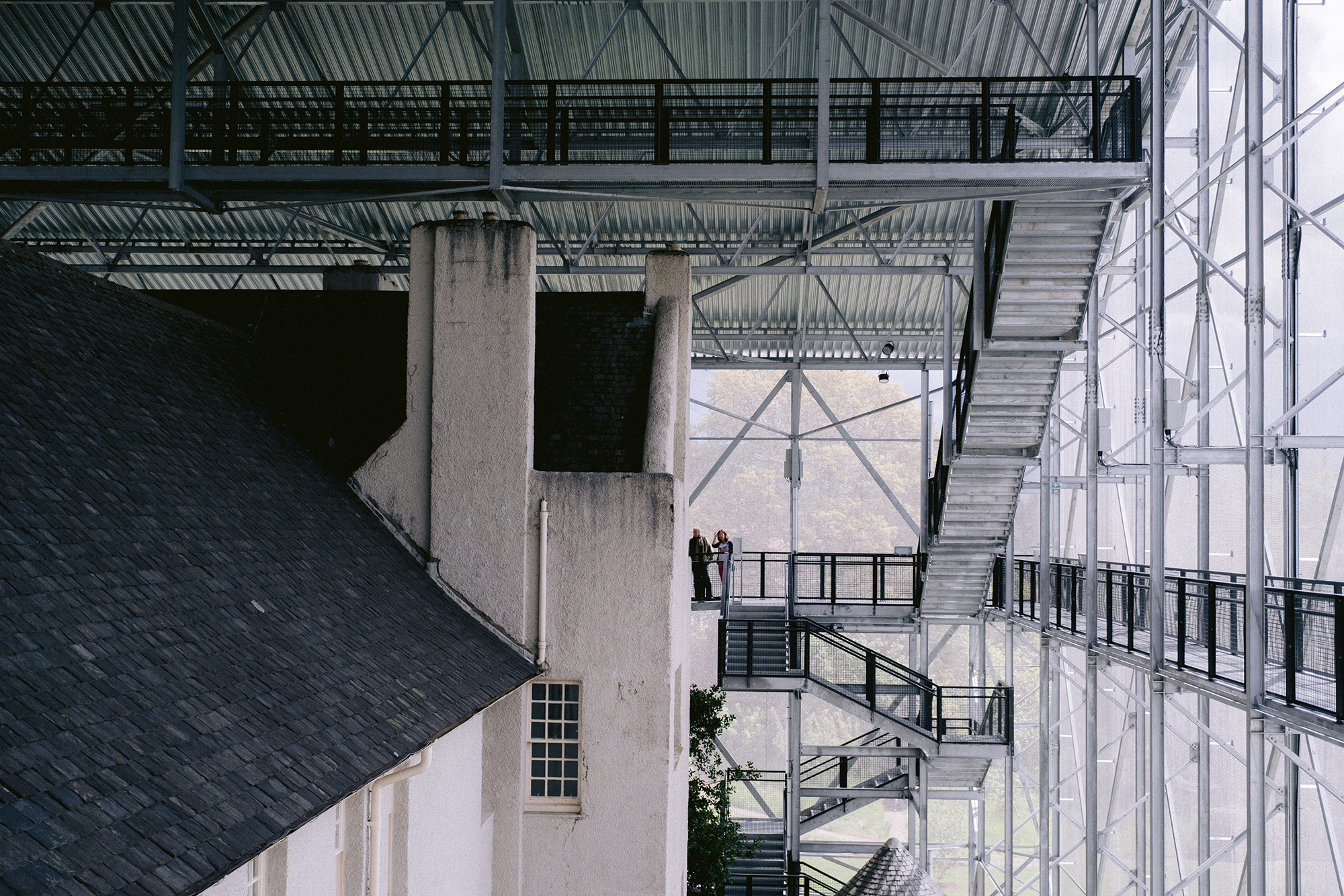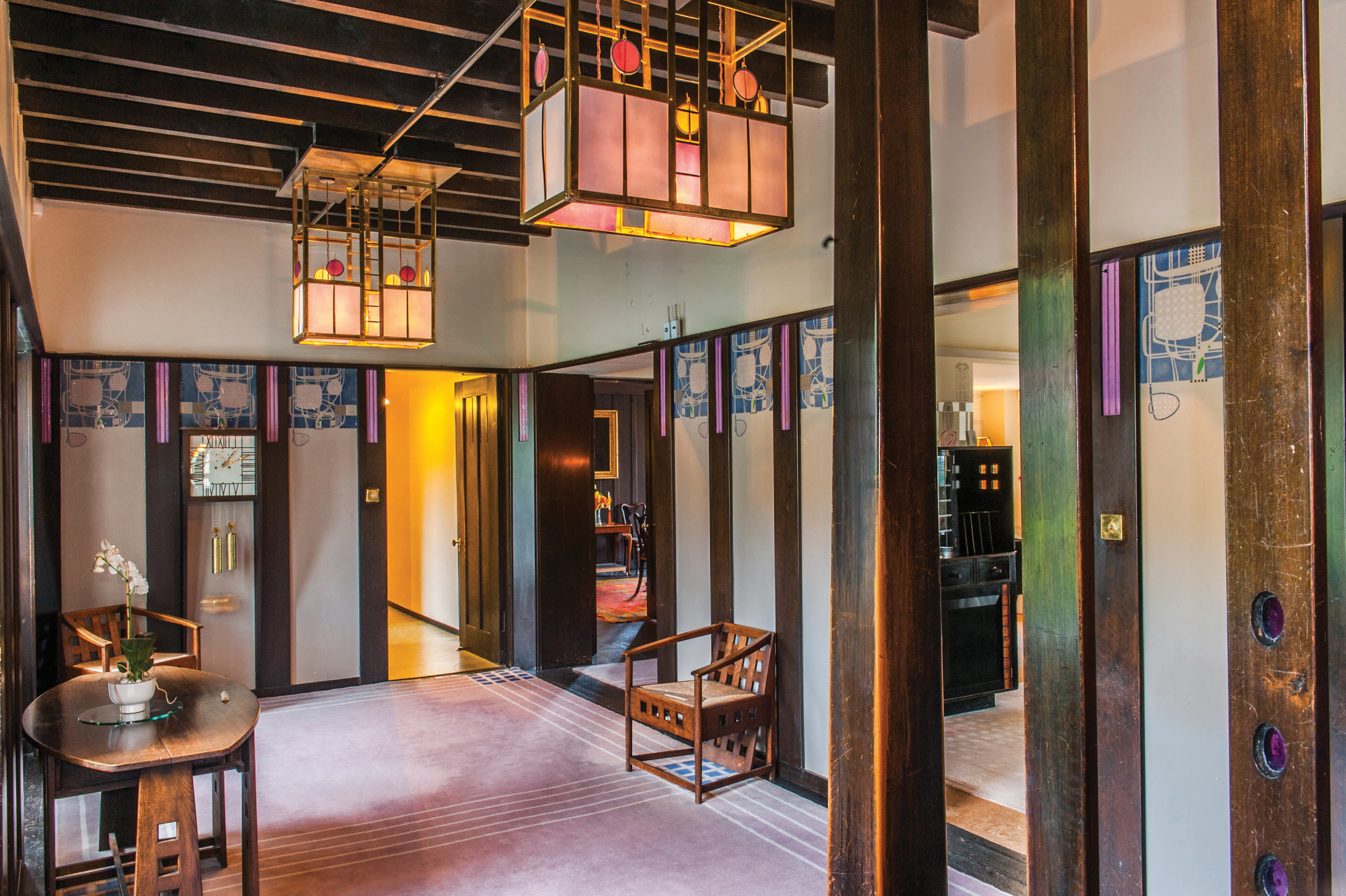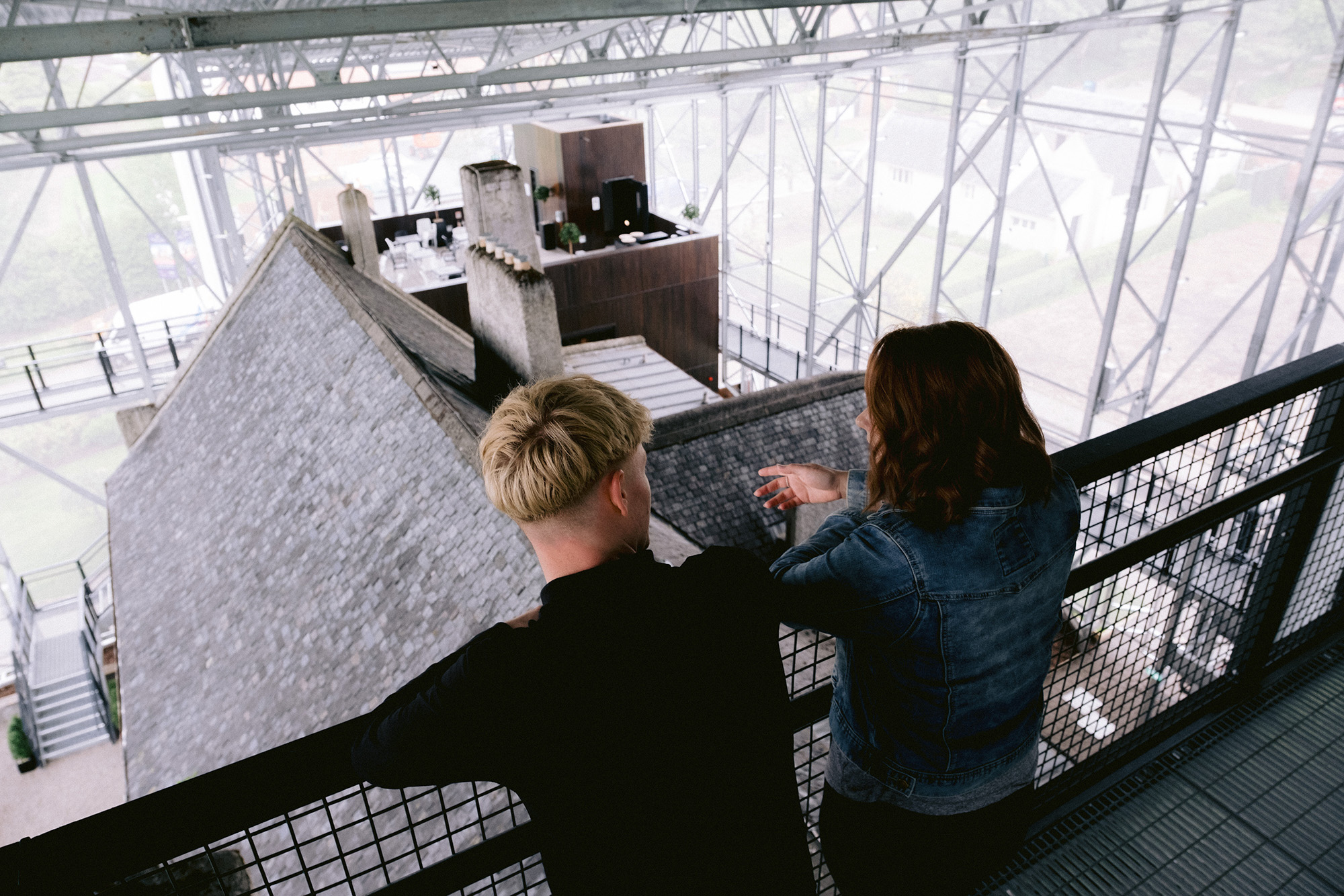A Visit to The Hill House
Our Saltire Scholar Eilidh discusses her visit to The Hill House in May and her impressions of the conservation work taking place there.
Before embarking on my journey to Boston to begin my internship with NTSUSA through the Saltire Scholar Programme, I visited as many National Trust for Scotland properties as I could. With my young adult membership, I set off on a road trip adventure around Scotland, and my first stop was just a short train ride away from Glasgow in Helensburgh. Living in Glasgow, where evidence of architect Charles Rennie Mackintosh’s influence is scattered across the city, I was looking forward to visiting one of his most famous works, The Hill House.
Upon setting foot on the property, I was greeted by one of the Trust’s most innovative preservation strategies: the Box. The House is currently undergoing intensive conservation work, enclosed in the Box, to limit further damage from Scotland’s infamous weather conditions. This innovative chainmail mesh structure was unlike anything I had seen before. The Box has elevated walkways surrounding it, offering visitors a unique perspective of the House and the chance to experience Mackintosh’s architecture in a way that was previously unavailable.

The impressive walkways of The Hill House
After taking in the views the Box offers, I took a tour of the House. At the beginning of the 20th century, Mackintosh and his wife, Margaret Macdonald Mackintosh, designed The Hill House in its entirety on behalf of publisher Walter Blackie and his family. From the rose motif on the wallpaper and upholstery to the ladderback chairs, the distinctive interior style was instantly recognizable as Mackintosh’s. In particular, I liked the light fixtures found in the hallway: originally, the circular panels of the fixtures were designed to rotate and move, powered by the gas mantles; however, this element has since been replaced with electric lighting.

Photo courtesy of David Ross
Whilst The Hill House is an iconic structure of the past, it remains an important building of the present due to the threats to its structural integrity and the forward-thinking, innovative measures that have been taken to prevent further damage to the House. At the end of my tour, I reflected on my experience and wrote down my suggestions for where the future of The Hill House and the Box should lie. I also had the opportunity to read other visitors’ ideas: whilst some supported the Box and argued it should be a permanent installation, others shared that they were patiently waiting for the Box to be dismantled and the House restored. Overall, it emphasized the passion for Mackintosh’s designs and the uncertainty that the future holds for The Hill House.
Since visiting The Hill House, I have noticed more of Mackintosh’s legacy within Glasgow and plan to see more of the exhibitions and museums dedicated to his work. I look forward to visiting again to discover the effects the Trust’s conservation program will have on The Hill House!

If you would like to learn more about Charles Rennie Mackintosh and his influential artistry, a recording of “Caring for Charles Rennie Mackintosh” has been made available, presented by Chief Executive of the National Trust for Scotland, Philip Long CBE. This talk was held during NYC Tartan Week 2022, with thanks to the American Federation of Arts and Scottish Government USA for partnering with us on this program.
You can support the conservation efforts at The Hill House by becoming a member of the The National Trust for Scotland Foundation USA. Young adult memberships are available to all students and individuals between the ages of 18 and 25.
Americans can also make a tax-deductible gift to The Hill House.

